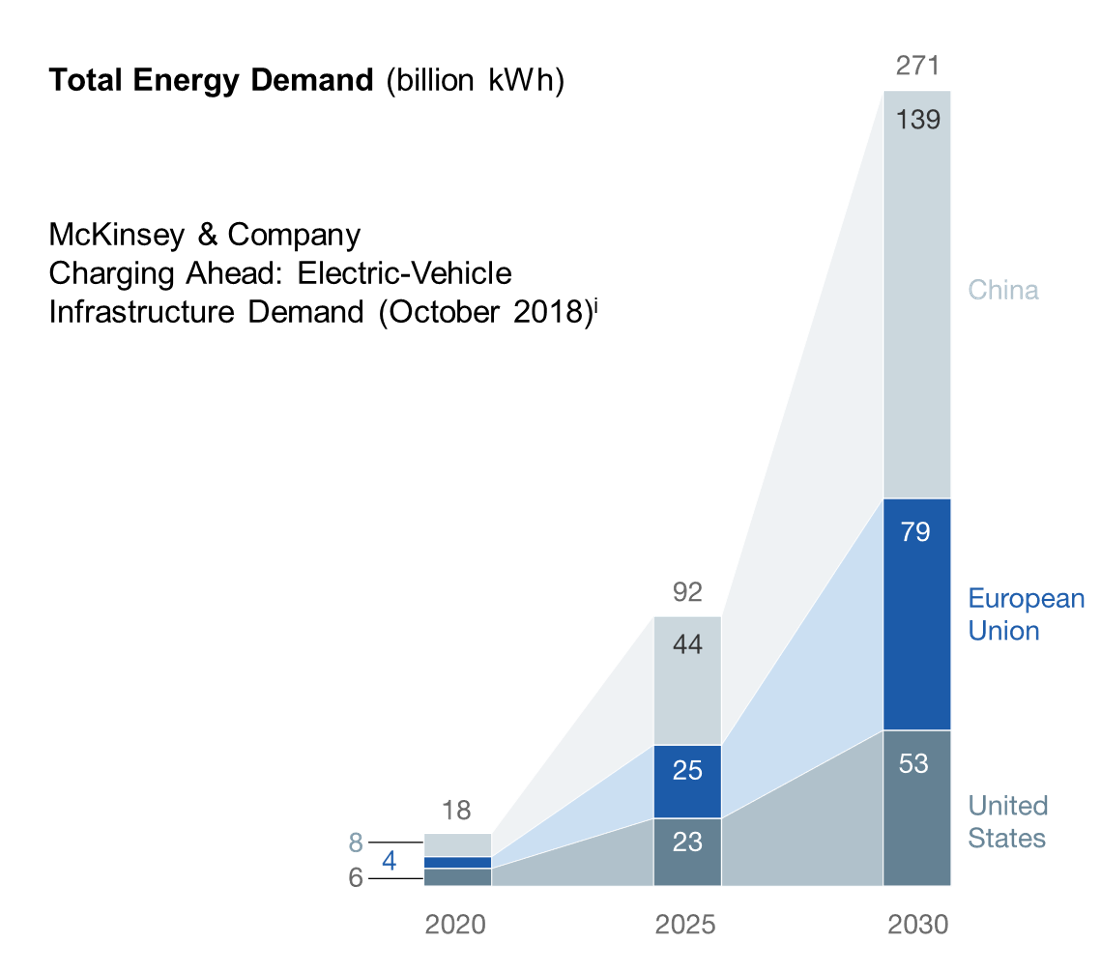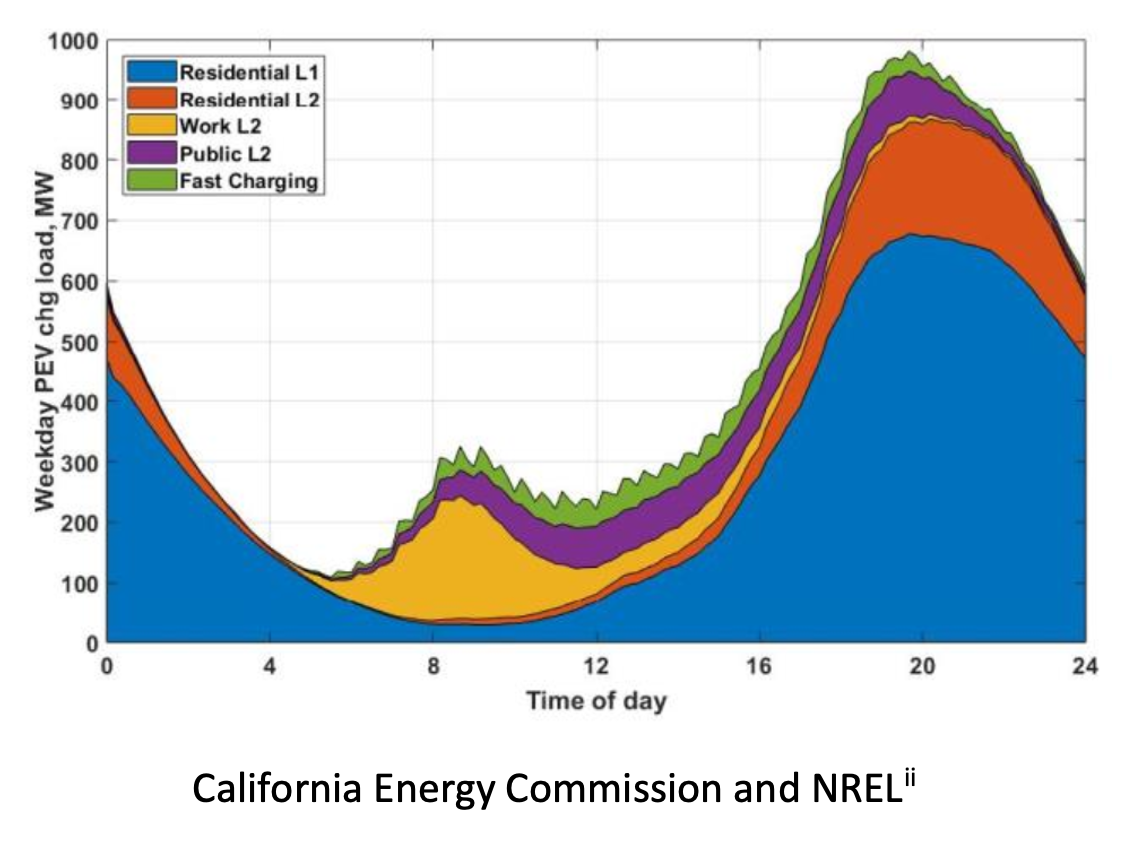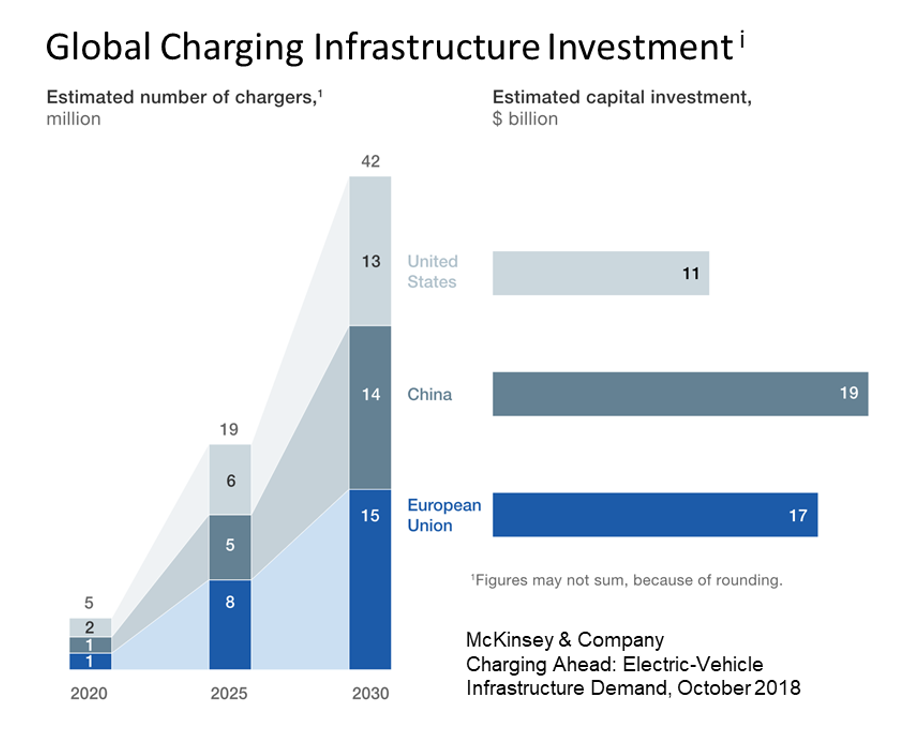Bridging the Electric Infrastructure Gap - Enabling the Future of Electric Vehicles
Electric Vehicle Adoption and Energy Demand
Mass electric vehicle adoption has been projected for more than a decade; however, a few key elements have been missing until now. Advances in Li-ion battery technology have enabled greater vehicle range, efficiency and power. These performance improvements coupled with reductions in batteries and other electric vehicle sub-system costs has allowed vehicle architects to develop solutions that are superior to internal combustion alternatives in their respective vehicle classes.
Electric vehicles are experiencing a transition from solutions people buy despite inferior performance and value to products that offer greater total value over their service life, with superior performance. This fundamental product transition has drawn significant investment in startup electric vehicle companies and by traditional automotive manufacturers, in an effort to capture market share and the associated market capitalization.
The new vehicles being offered now and those that will be available over the next 5 years will provide individuals with cost effective options in multiple vehicle segments. These competitive vehicle options coupled with the increased social movement toward environmental commitment will finally drive the electric vehicle adoption that has been prematurely projected by market analysts for years.
The coming EV expansion will drive significant increases in energy demand. The projected charging energy demand is expected to grow by more than tenfold by 2030 . Significant investments will be required to accommodate the burgeoning EV demand.

The significant growth in energy demand will continue to be drawn by residential charging, as people come home after work and plug in. The energy demand today is primarily driven by slow level one charging of just over 1kW per vehicle; however, as vehicle range and battery size increase, average charging power will need to go up. The next generation of home electric vehicle chargers will provide 11kW output, similar to the average power consumption of 10 homes. The introduction of this power demand spike will tax local grid infrastructure, especially in communities with multiple electric vehicles.
Early EV adoption in California has created a local test case for power demand, with a spike building around 7pm, driven primarily by level one slow-charging at home. This phenomenon will only get worse as charging speeds become faster and overall demand increases.

“The extent to which residential demand can be shifted temporally … will depend on the use of charging technologies and price incentives that aid dispatchability and avoid substantive changes to driver travel and behaviors.” - California Energy Commission, (August 2018) ii
The aging US power grid is not well equipped to accommodate the coming electric vehicle charging demand. The California Energy Commission has acknowledged that to the extent new technology coupled with rate structure modifications will be required to support EV adoption.
Ubiquitous EV Charging Within Power Grid Constrains
As EV related power demand outstrips the capacity of local grid infrastructure, operators will need to raise power rates and introduce harsher time-based and tier-based fees in order to reduce vehicle charging, modify charging habits and ultimately dampen electric vehicle demand. Without the introduction of new technologies to support local charging, power infrastructure will become the next roadblock to electric vehicle adoption.
Electric vehicle chargers will need to evolve, incorporating new technologies to mitigate the need for infrastructure expansion. New vehicle charging stations will need to incorporate three primary technologies: smart charging, renewable power integration, and local energy storage.
Existing charges don’t elegantly redistribute peaks in EV power demand. Charges will need to become smarter, incorporating machine learning to understand the vehicles, their drivers, and the instantaneous state of the grid, in order to make sound decisions about real-time power deliver. Improved data acquisition over time with allow meaningful developments in active power management, creating smarter charging stations over time. These systems will actively manage charging of multiple vehicles in a home, as well as large numbers of vehicles within a region.Charging stations will need to incorporate local renewables to support available power for the charging systems. Distributed renewables will reduce power generation and local power distribution requirements. Residential solar continues to become more popular; however, there is not a high level of integration between residential solar power arrays, their power inverters, and the residential charging systems. Close coupling of these systems will enable future smart chargers to actively manage power, optimizing energy delivered from solar arrays to vehicles. Integration of renewable inverters into charging systems will allow the solar assets to become part of a smart home charging ecosystem.
Integrated energy storage is a third key technology, required in order to unlock the potential of charger machine learning and renewables integration. The incorporation of batteries into chargers will enable a time and power disconnect between the energy delivered to vehicles, and power required from the grid. These systems will enable home backup, as well as transportation energy security for consumers.
Charging Infrastructure Development
Even with the adoption of new technologies, there will need to be a significant investment in EV infrastructure in order to accommodate the transition to cleaner forms of transportation. The EV charging infrastructure market is immense, 11 Billion will be invested in the US alone by 2030. Residential charging will remain the largest segment in the US through the period.

Based on charging location and power trends, residential charging infrastructure will be the key to unlocking the rapid expansion of vehicle electrification. Significant investments in residential power infrastructure, simultaneously introduced with new charging technologies that enable faster and smarter residential charging will be required to unlock the potential for cleaner transportation.
i Hauke Engel, Russell Hensley, Stefan Knupfer, Shivika Sahdev, ‘Charging Ahead: Electric-Vehicle Infrastructure Demand’, McKinsey & Company, McKinsey Center for Future Mobility, October 2018, https://www.mckinsey.com/~/media/McKinsey/Industries/Automotive%20and%20Assembly/Our%20Insights/Charging%20ahead%20Electric-vehicle%20infrastructure%20demand/Charging-ahead-electric-vehicle-infrastructure-demand-final.pdf
ii Abdulkadir Bedir, Ph.D., Noel Crisostomo, Jennifer Allen, Eric Wood, and Clément Rames, National Renewable Energy Laboratory, ‘California Plug-In Electric Vehicle Infrastructure Projections: 2017-2025’, California Energy Commission, August 20, 2018, https://www.google.com/url?sa=t&rct=j&q=&esrc=s&source=web&cd=&ved=2ahUKEwjArp6AoffvAhVkCTQIHdAYAA8QFjAAegQIAxAD&url=https%3A%2F%2Fefiling.energy.ca.gov%2FGetDocument.aspx%3Ftn%3D224521&usg=AOvVaw11rS4jqN0-oUgyNqHI27nq

